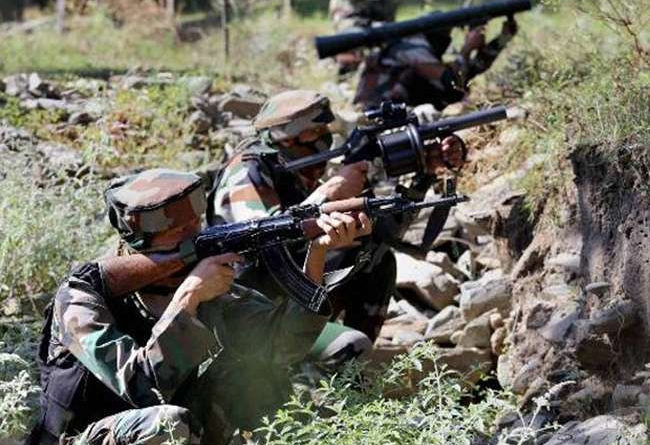Technology That Can Aid Forces In ‘Beyond Enemy Lines’ Operations
February 3, 2020
BENGALURU: A special personnel tracker being developed for ‘strategic use’ holds the potential of aiding India’s armed forces sent on ‘beyond the enemy lines’ operations in the future, and the fact that the new technology is completely indigenous will mean more secrecy.
As part of its Indian Regional Navigation Satellite System (IRNSS), the Indian Space Research Organisation (ISRO) has developed the technology for the said personnel tracker, and transferred the same to Defense PSU Bharat Electronics Limited (BEL).
This technology is not part of the regular chipsets or other receivers developed as part of IRNSS programme. This will be part of ‘Restricted Service’ (IRNSS-RS), developed specifically for strategic users of the country, a source from the department of space, said.
ISRO has been quiet about this technology, which has been in the works for at least 18 months now. One official ISRO document that partially explains this and other IRNSS-RS technologies, reads: “The IRNSS–RS provides location navigation service with anti-spoofing technology for authorized users. Personnel Tracker gives position information in TDMA mode of operation.” TDMA or time-division multiple access mode — which separates users according to time — ensures that there will be no interference from simultaneous transmissions, while anti-spoofing technology prevents traffic from false sources (IP addresses).
In a written reply to TOI on whether it was developing a personnel tracker, BEL said: “BEL has signed an agreement with ISRO for development of a two-way reporting terminal and personnel tracker based on IRNSS. The two-way reporting terminal will be used to track the position of fishing vessels and reporting emergencies. The personnel tracker will be a one way reporting terminal for reporting the position of person/vehicle based on IRNSS.”
Elaborating on this, sources said given that IRNSS covers the entire sub-continent region, if a team of armed forces personnel “were on a job on the other side (of the border), their commanders back home will know their exact position at all times.”
The ISRO document further read: “The tracker supports small message as well as data transfer through satellite and USB/Bluetooth user data interface. This tracker will be used to track the person in the field of operation in situations like disaster rescue operation, surveillance etc.”
When asked a specific question on its uses in “beyond enemy lines” operations, ISRO chairman K Sivan told TOI: “I don’t want to elaborate on this question as it is a strategic project.” On the benefits of tracking ships and personnel, he said: “It has complete strategic uses, we shouldn’t discuss it now.”
Sources said that the fact this technology would be working on completely indigenous technology, including the satellite used to get the location — longitude and latitude — makes it more suitable for such operations. Before IRNSS, while India could, using its remote sensing satellites map areas of operation/s, it had to depend on foreign resources like the GPS for location and navigation services. “Now, the data will remain with us and only us,” another source said.
Apart from this technology, BEL, working jointly with ISRO has developed a portable IRNSS Receiver for navigation applications. “As an offshoot of this programme, BEL has developed variants based on IRNSS-RS receiver functionality such as PTS (Precision Time Servers) in both rack mount and wall mount form factors and receivers with Map-based navigation application.
Courtesy: TOI

